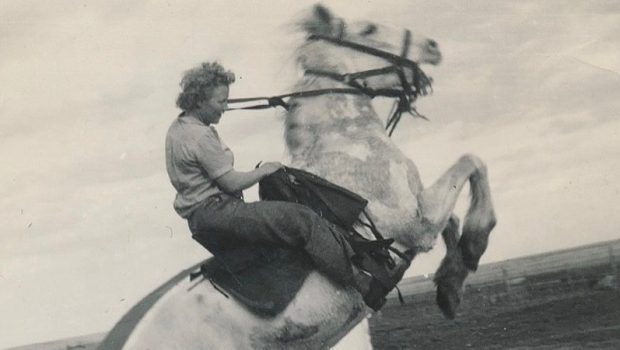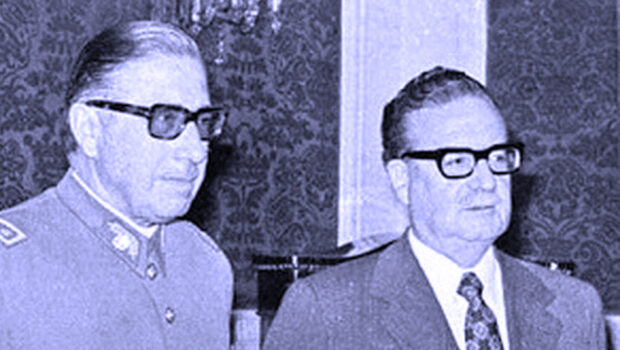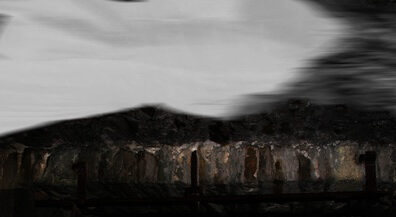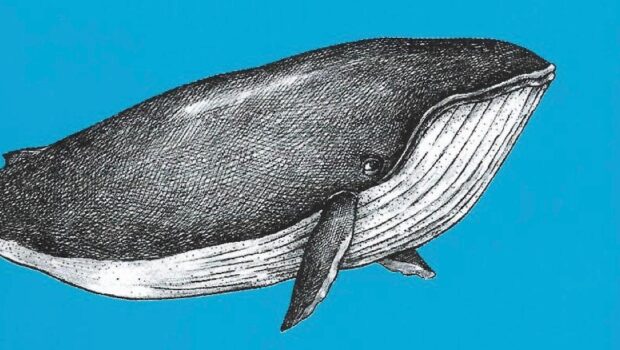Chasing Tumbleweeds
Charlotte Hyde
This story forms part of the anthology for young readers entitled Chapelle Creek Memories: Growing Up during the Great Depression in South Dakota, available soon through Literal Publishing.
* * *
The fall of 1934 was a dirty, windy time. No rain had fallen for months. Every day, the wind blew clouds of ugly yellow dust over the prairie. The dust was everywhere, and even Mrs. Hanson, the Cunningham children’s grandmother who was very particular with her housework, had given up. She cleaned each room thoroughly every morning but by noon, the windowsills were full of dust and little rivulets of it would settle onto the floor. Rose, Bobbie and Marjorie used the homestead shack that sat in their yard to play house with pots, pans and other utensils. But it wasn’t fun to play house when the dust was forever blowing into their eyes, so they hung up the pots and pans.
The Uecker family’s house was snuggled on the creek among the trees in a natural bowl surrounded by hills, so the wind did not blow as hard there. Still, the yellow dust filtered gently down and settled on the ground, the livestock, and the children when they went outside to play. Their hands, feet, faces and blonde hair would get so grimy with dirt that they would beg Ma to let them go into the pool by the spring so they could wash themselves. That helped to keep them clean until the weather became too cold. After that, Ma cut kerchiefs out of an old skirt for the girls to wear on their heads to protect their hair. Sometimes the dust was so thick, the barn would look like it was in a dense fog and the hills surrounding the creek could barely be seen.
When school started in September, the children trudged up the road over the hill where they met the wind blowing wildly on the prairie, carrying swirls of dirt down the cow paths. Marie, Charlotte, Ted and Goldie bent into the wind carrying their lunch pails, their sweaters and jackets flying out behind them. When they reached the schoolhouse and entered the hall, their teacher Miss Loughlin would say sharply, “Please, close the door.” She tried to keep the schoolroom tidy, but it was nearly impossible with all the dust blowing everywhere.
The frost came in late September, and the Russian thistles covered the fields and bare spots on the prairie where the grass wouldn’t grow. Charlotte liked to look at the thistles when they were green. They had beautiful tiny rose-colored flowers in every spine. Like little doll flowers, Charlotte thought, but when she touched them, she would pull her hand back in pain, for the spines were sharp as needles.
Soon after freezing, the thistles turned from their green color to an ugly black. Then after a short while, they turned to a light tan. After they turned tan, the wind blew them off their roots and they would go rolling over the prairie. Huge round thistles rolled everywhere, bouncing high into the air, hitting the fences, stretching the wires and sometimes breaking off posts, piling high only to be blown loose again when the wind changed direction. The children at Crocus Hill School would have fun with the thistles that blew into the big schoolyard. They would take sticks and run behind them, hitting them to roll them faster over the ground. When they got to the fence, they would put their sticks underneath to lift them over, and the thistles would bounce again merrily over the prairie.
Sometimes, the entire school—Rose, Marie, Charlotte, Ted, Bobbie, Melvin, Marjorie and Goldie— would crawl through the fence and follow them. But the wind would give the whirling thistles so much momentum that soon they would outdistance the shouting, laughing children running and waving their sticks. Then they would then go back into the schoolyard and wait for more thistles to come bouncing over the fence.
Their teacher, Miss Loughlin, had visited the County Superintendent’s Office in Pierre before school started. She was given some new reading books for the fourth grade. Ted and Bobbie were in the fourth grade and liked their new books. One day, they read about some children in a big city. The book showed a picture of a beautiful little girl in a pink dress, white socks, and black patent leather shoes chasing a hoop with a stick.
“Oooh,” exclaimed Bobbie. “I wish I had a hoop.”
“That would be fun,” said Marie when she looked at the picture, and all the rest of the children agreed. All but Charlotte, who said, “I don’t think I’d want one.”
“Oh, Charlotte,” scolded Marie, “you always have to be opposite.”
Charlotte said nothing and reached for her arithmetic book, but Miss Loughlin was curious. “Why wouldn’t you want a hoop, Charlotte?” she asked.
Charlotte looked up. She brushed her dusty white hair away from her eyes. “I’d rather chase thistles with a stick,” she answered. “They are just as round, and I’ll bet they go faster. Besides…” She stopped, opened her book and reached for her pencil. “Besides, what?” demanded Bobbie. “Besides,” said Charlotte, “you would always have to go get the hoop and put it away when you were through playing with it, so you could find it next time. When you play with thistles, you can chase them until you are tired, and then you can let them go. There are always a lot more when you want to do it again.” Then Charlotte took her tablet out of her desk, bent her head, and began working on her arithmetic.
Charlotte Uecker Hyde was born in 1923, into a family that lived at various sites along Chapelle Creek in Hughes County, South Dakota. As a young woman, Charlotte attended normal school and obtained her teacher’s certificate in 1942. She taught at several schools and edited The Raber Tumbleweed, a local newsletter for the troops in World War II. After the war, she married Charles Agar Hyde and became a farmwife on his ranch in the Big Bend area, as well as the proud mother of five children. She became an accomplished painter after taking a correspondence course for artists and served as President of the Canvasback Art Club in Pierre for many years. Charlotte also worked for the Robinson Museum, the State Library, and the Heritage Center in Pierre, South Dakota, where she continues to live today.
©Literal Publishing
Posted: May 19, 2019 at 7:42 pm










